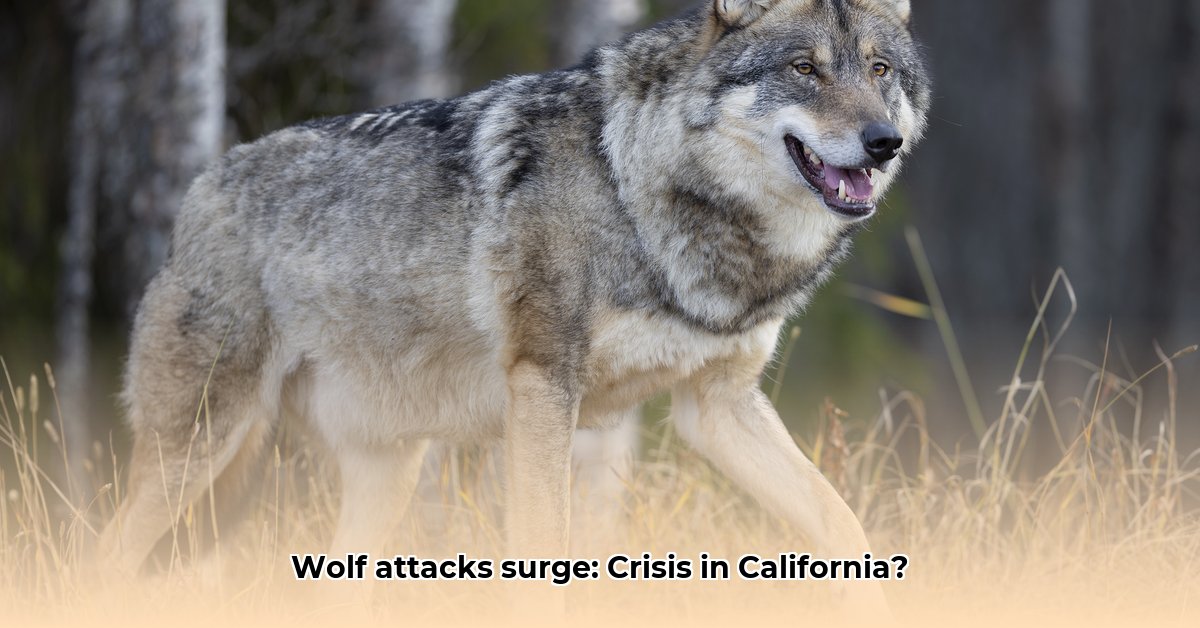California’s Sierra County is facing a growing crisis: a sharp rise in reported gray wolf attacks on livestock. This surge has ignited a complex debate, highlighting the challenges of balancing the protection of an endangered species with the economic realities of ranching communities. The situation is further complicated by conflicting data, with the Sierra County Sheriff’s office reporting significantly more attacks, particularly in April 2025, than officially confirmed by the California Department of Fish and Wildlife (CDFW), whose data currently only extends to March 2025. This discrepancy fuels mistrust and underscores the urgent need for transparent, accurate, and timely information sharing.
The gray wolf, federally protected under the Endangered Species Act, is gradually expanding its range in California. This natural expansion inevitably leads to increased interactions with humans, particularly ranchers, resulting in territorial disputes and livestock depredation. The wolves’ protected status restricts management options, adding another layer of complexity to an already challenging situation.
The recent surge in reported attacks has placed immense pressure on Sierra County ranchers. While the precise number of incidents remains unclear due to the data discrepancies, the impact on ranchers is undeniable. Livestock losses represent direct financial hardship, threatening the viability of their operations and creating understandable fear for the safety of their animals, and even their families. This fear, coupled with the economic strain, fuels frustration and fuels calls for more immediate action.
The conflicting data reported by the Sheriff’s office and the CDFW pose a significant obstacle to effective management. Accurate, real-time data is critical for understanding the true scale of the problem and implementing targeted solutions. This lack of clarity hinders collaborative efforts and erodes trust between ranchers, wildlife officials, and the broader community. Addressing this data gap is paramount for developing effective strategies.
This complex situation involves a range of stakeholders, each with valid concerns:
- Ranchers: Bearing the brunt of the economic losses and safety concerns, ranchers advocate for more proactive management strategies. Their needs include robust compensation programs for lost livestock, more effective non-lethal deterrents, and, in some cases, consideration of lethal control measures as a last resort.
- California Department of Fish and Wildlife (CDFW): Tasked with balancing the welfare of wildlife with the needs of humans, the CDFW emphasizes non-lethal mitigation methods, ongoing research, and community outreach. They must adhere to the stringent federal regulations protecting gray wolves.
- Sierra County Residents: Local communities are deeply impacted by this conflict, expressing concerns about public safety, the broader economic implications for the county, and the emotional toll of escalating attacks. They demand increased transparency, meaningful community engagement, and support for both ranchers and wolf conservation initiatives.
- Federal Agencies: Bound by the Endangered Species Act, federal agencies provide essential guidance, funding, and oversight to ensure compliance with national wolf management plans. This role is critical for navigating the legal framework surrounding endangered species.
To effectively address this escalating human-wildlife conflict, a multifaceted approach is required, encompassing both short-term and long-term strategies:
-
Enhanced Data Collection & Transparency: Implementing standardized reporting procedures and fostering seamless communication between local, state, and federal agencies is crucial. A centralized, publicly accessible database tracking reported and confirmed depredations would enhance transparency and build trust.
-
Strengthened Non-Lethal Deterrents: Expanding the use and refining the application of proven non-lethal methods is vital. This includes exploring and implementing improved fencing, strategically deploying livestock guardian animals (LGAs), and researching innovative aversive conditioning techniques to minimize livestock losses without harming wolves.
-
Expanded Research & Monitoring: Investing in comprehensive research focused on gray wolf behavior, ecology, and the efficacy of various deterrent methods is essential. Analyzing the impact of land management practices on wolf-livestock interactions can further inform long-term coexistence strategies.
-
Community-Based Collaboration: Fostering open dialogue, shared responsibility, and collaborative problem-solving among all stakeholders is paramount. Establishing local working groups comprising ranchers, wildlife officials, community representatives, and scientists can facilitate the development of locally adapted solutions.
-
Streamlined Compensation Programs: Ensuring that ranchers receive fair and timely compensation for confirmed livestock losses can significantly alleviate the financial burden and encourage greater cooperation with conservation efforts. Simplifying the claims process and increasing funding for these programs is essential.
-
Adaptive Long-Term Management: Developing and implementing adaptive management plans, informed by continuous monitoring, ongoing research, and stakeholder input, is crucial. These plans must be flexible and responsive to the evolving dynamics of human-wildlife interactions, ensuring the long-term viability of both ranching and gray wolf conservation in Sierra County.
The escalating conflict in Sierra County underscores the urgent need for immediate, collaborative action. The intertwined challenges of conflicting information, diverse stakeholder perspectives, and legal complexities require a commitment to transparency, open communication, and a willingness to adapt strategies as new data emerges. By working together, we can strive towards a balanced, sustainable solution that supports both the livelihoods of ranchers and the long-term survival of this iconic endangered species.



![Saving the [Example of Endangered Species in Pakistan]: A Call to Action for Conservation Efforts example-of-endangered-species-in-pakistan_2](https://www.lolaapp.com/wp-content/uploads/2023/12/example-of-endangered-species-in-pakistan_2-150x150.jpg)












